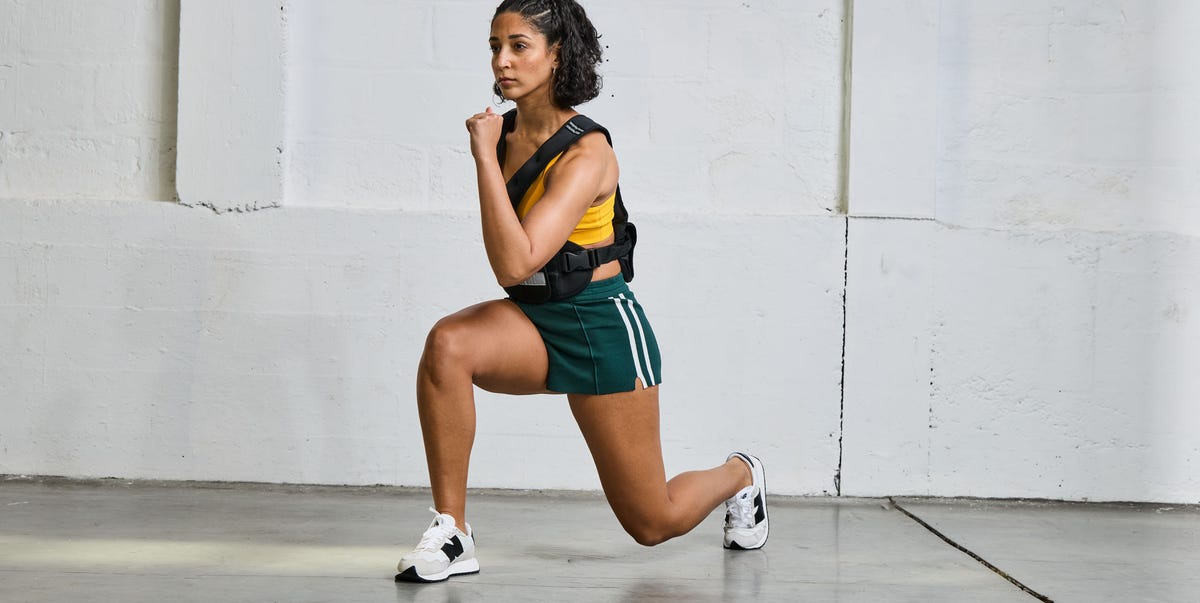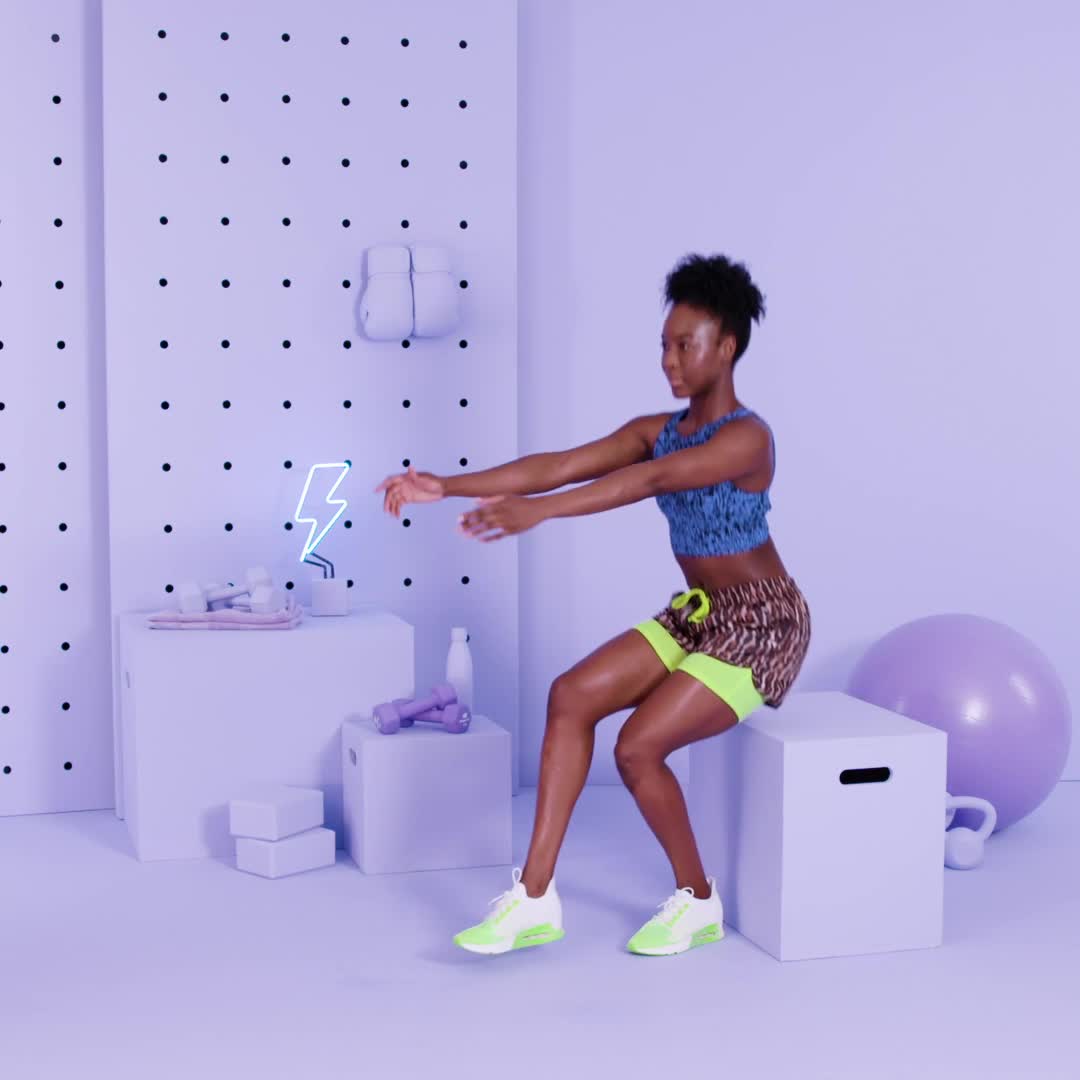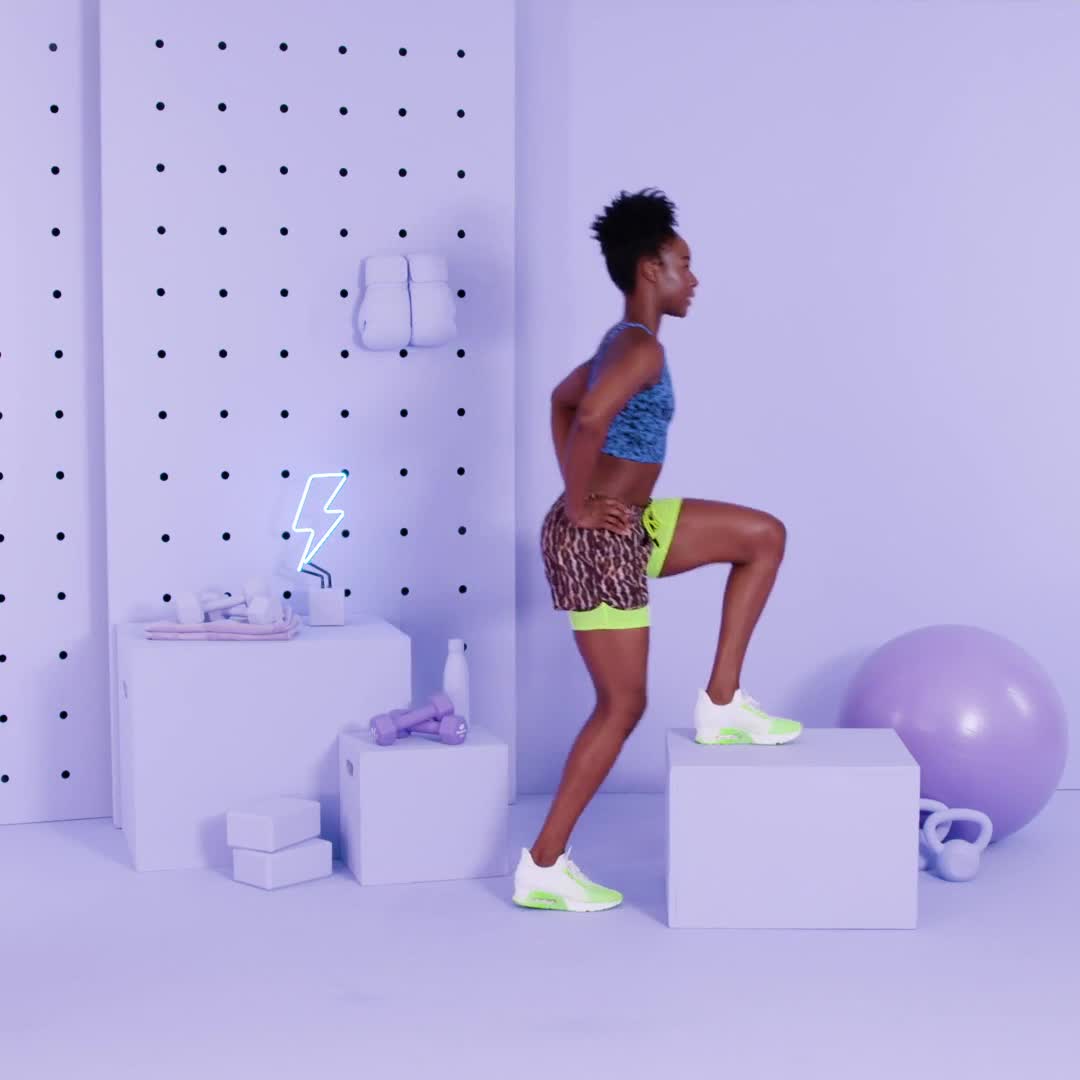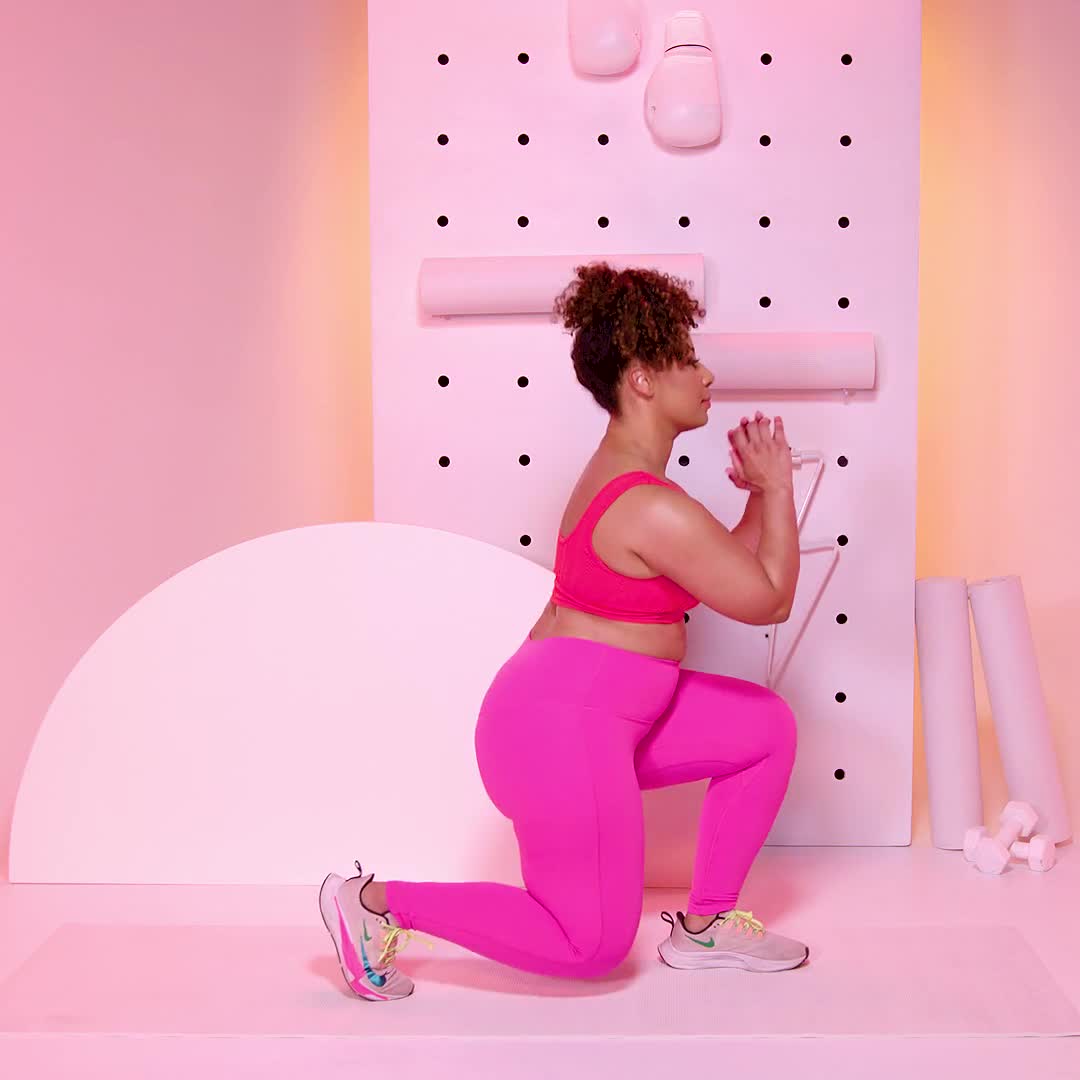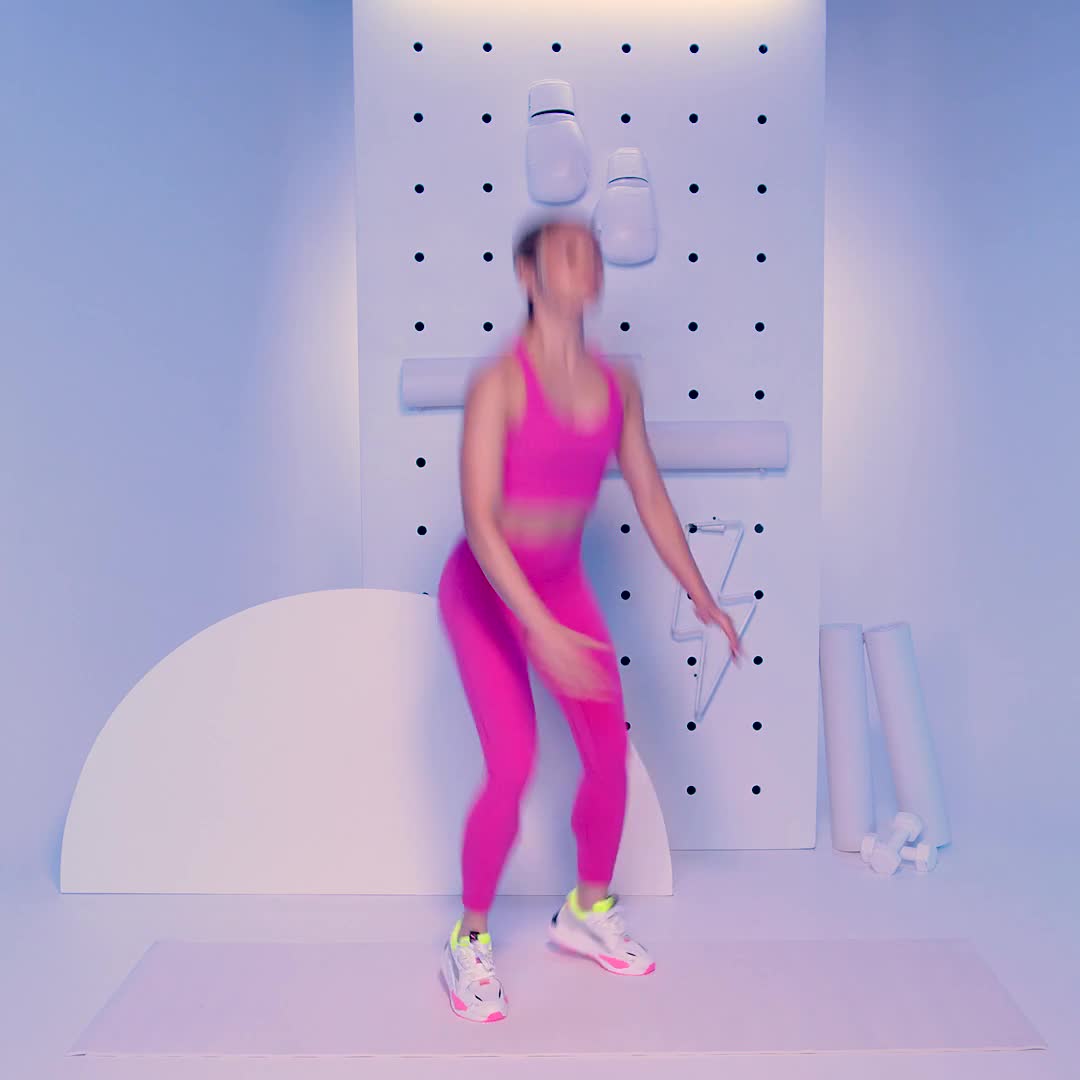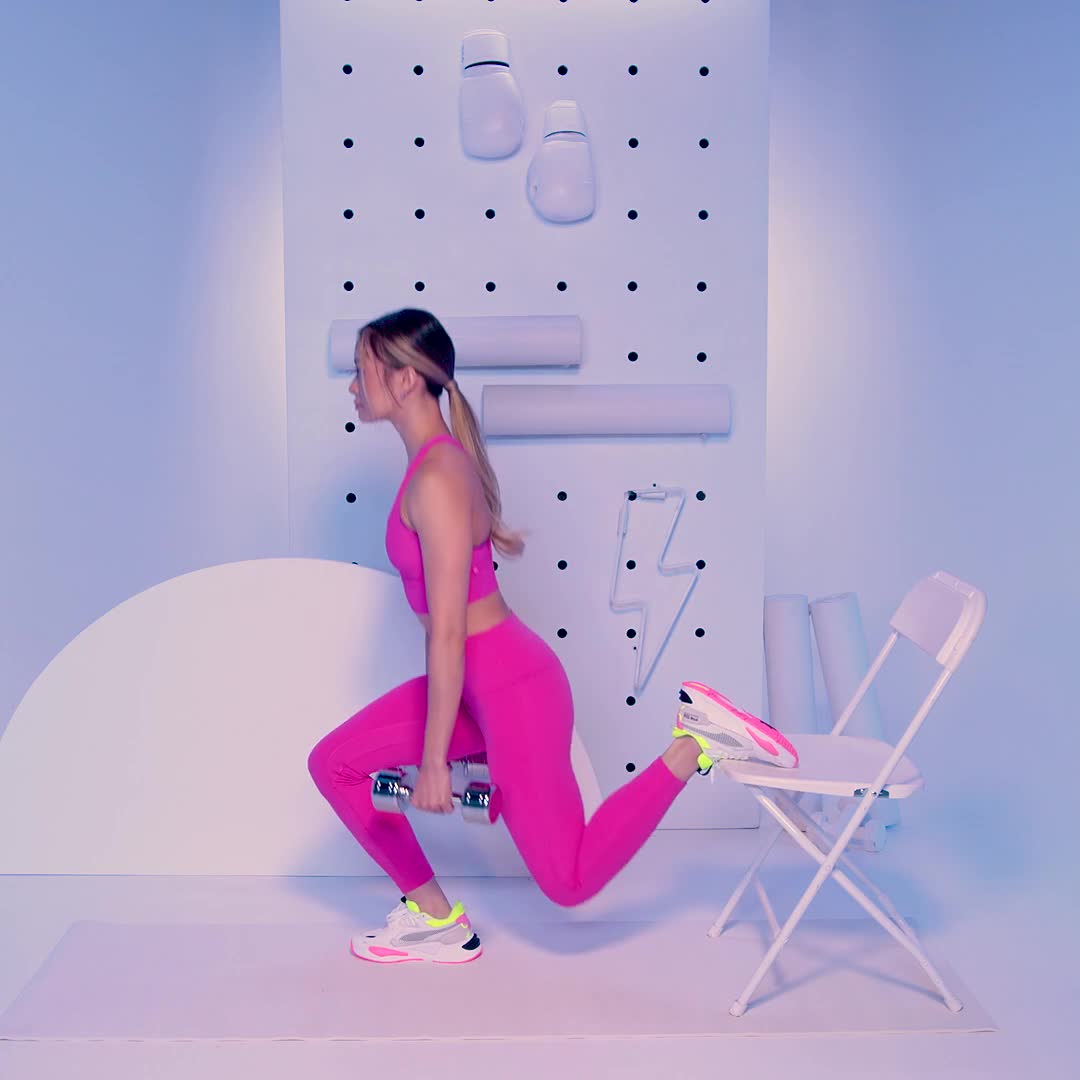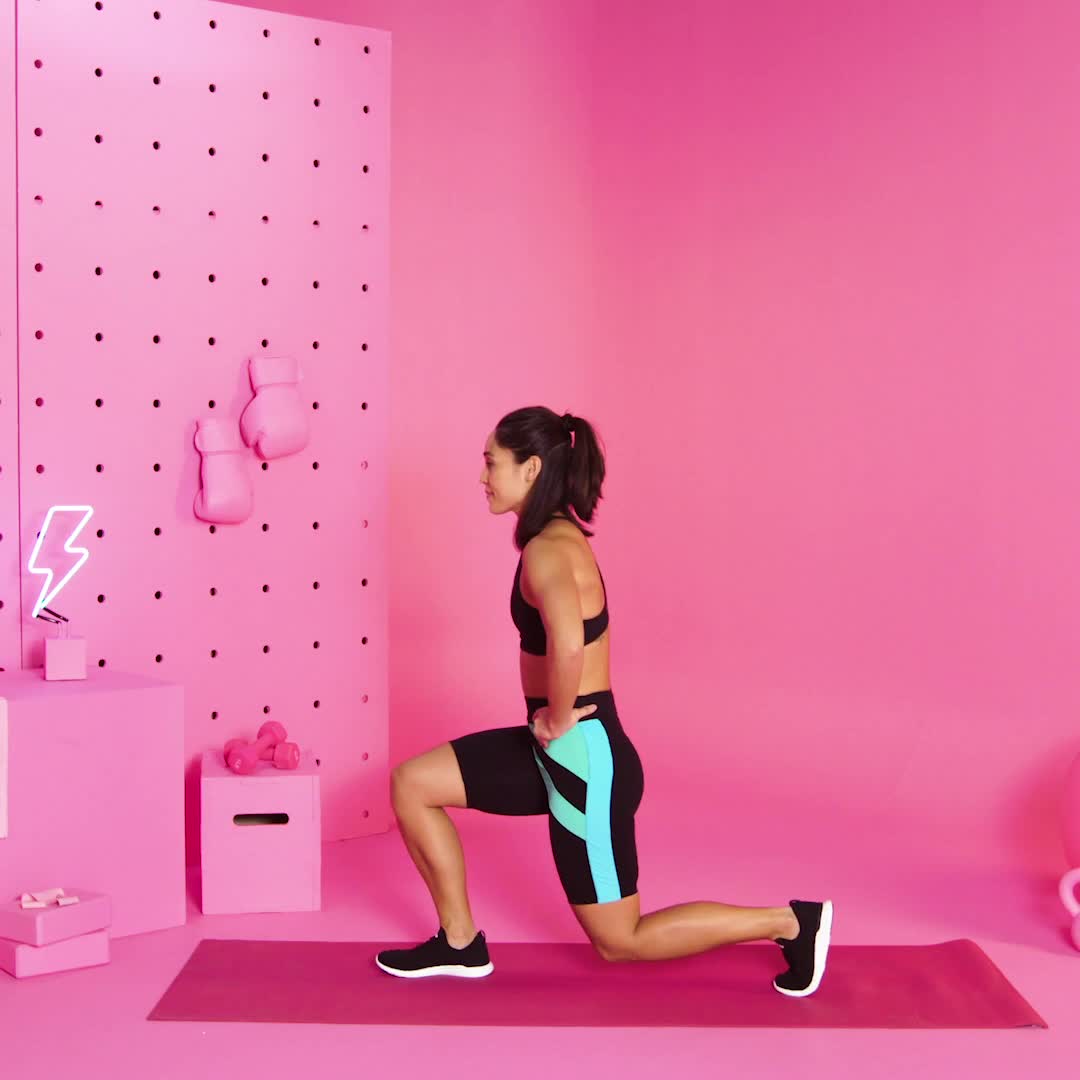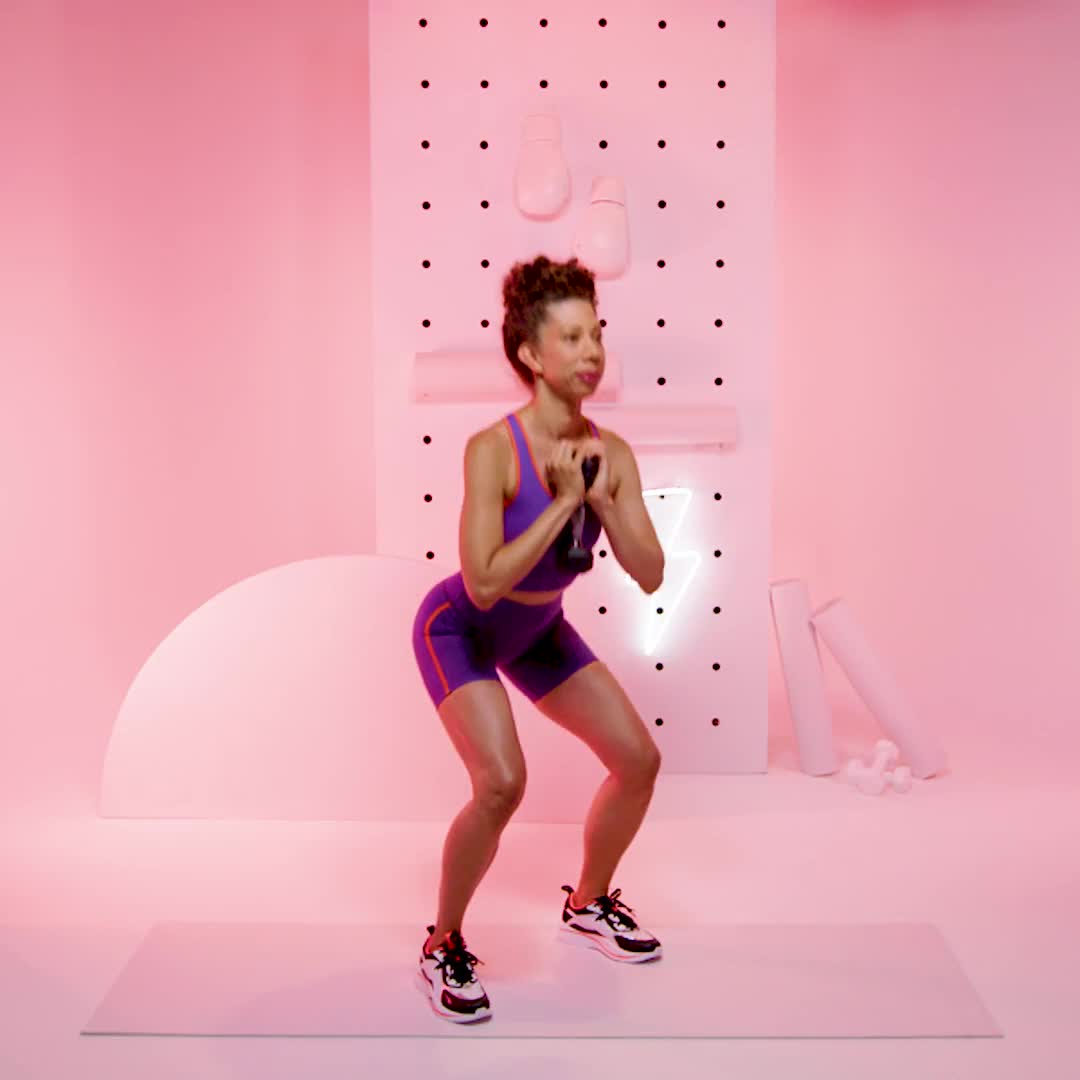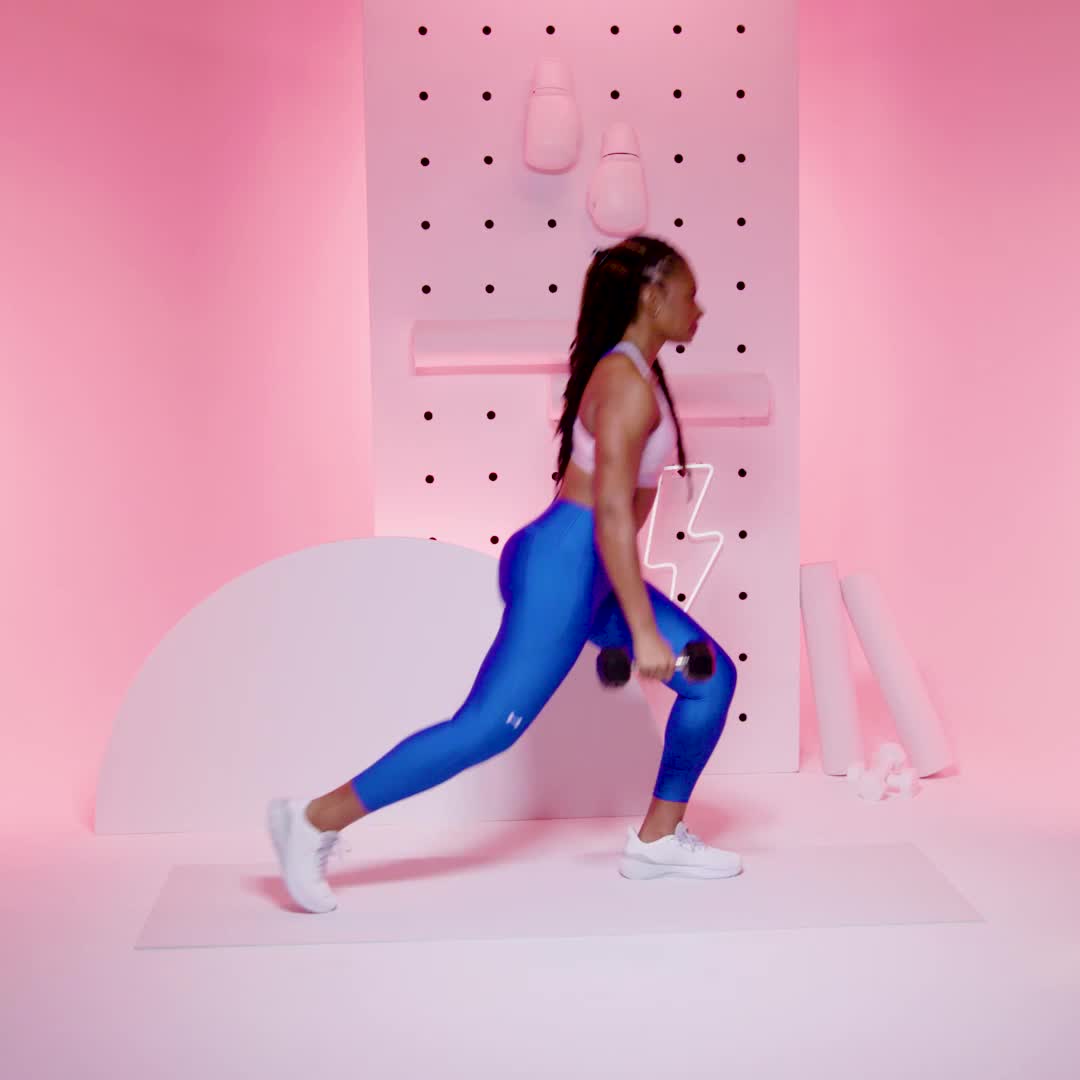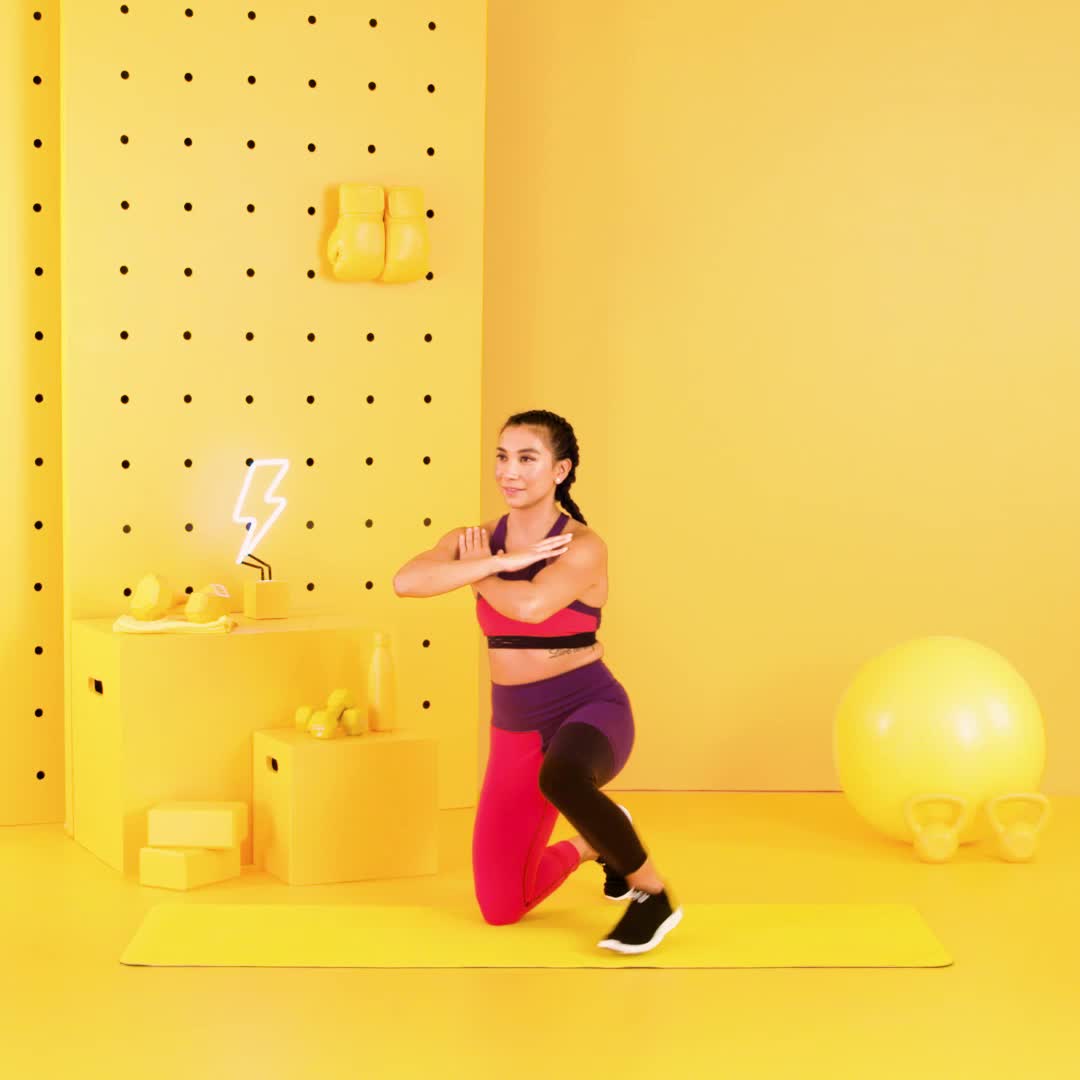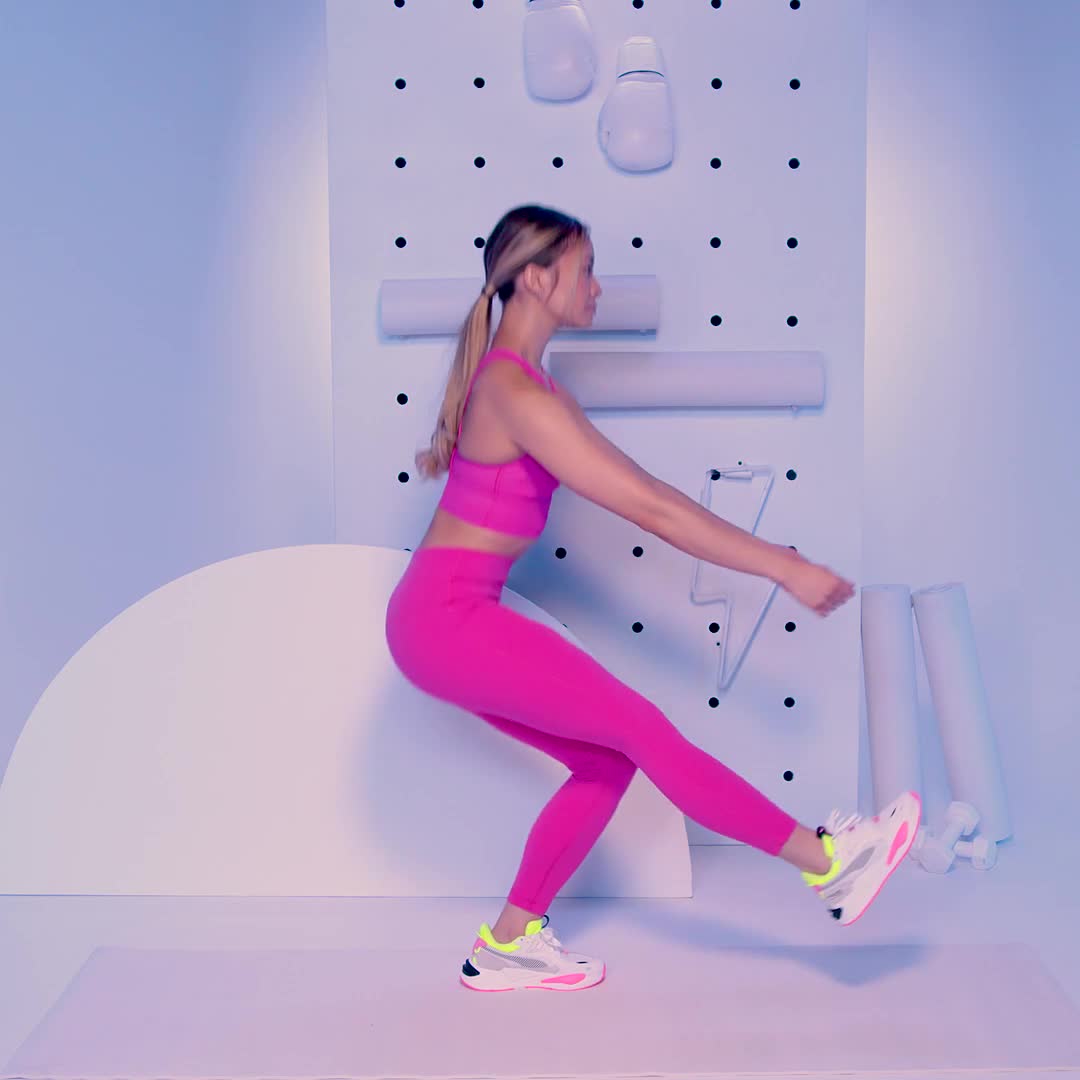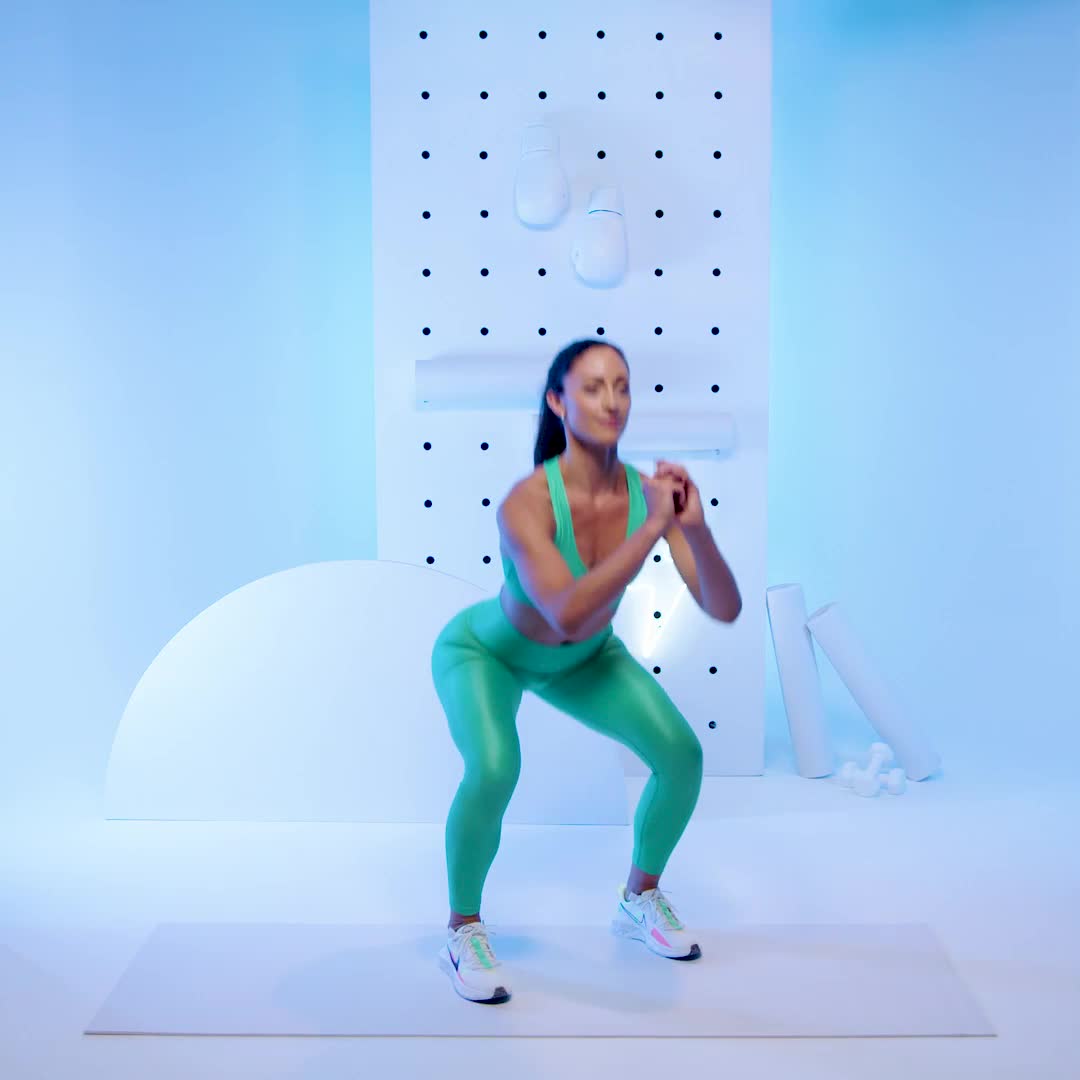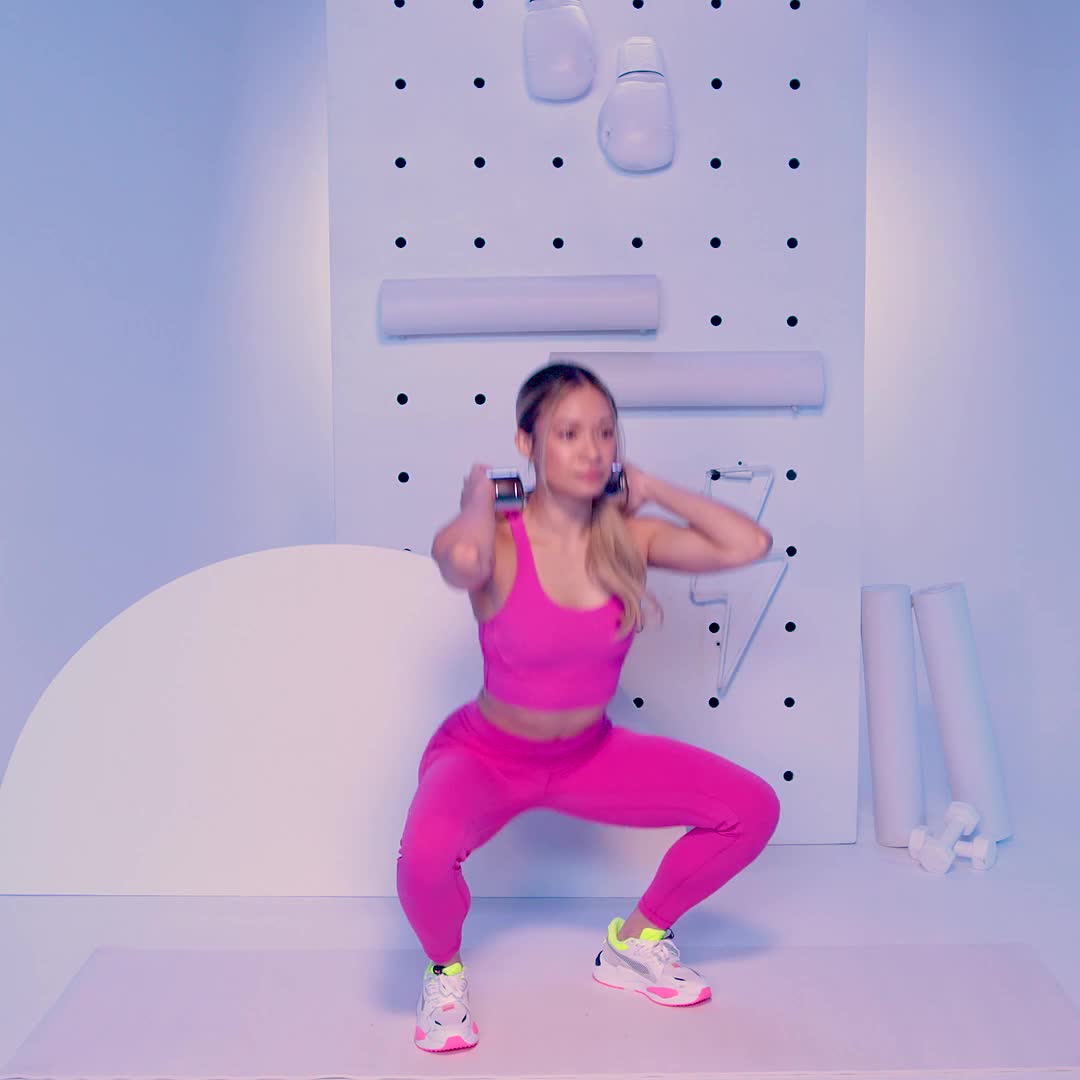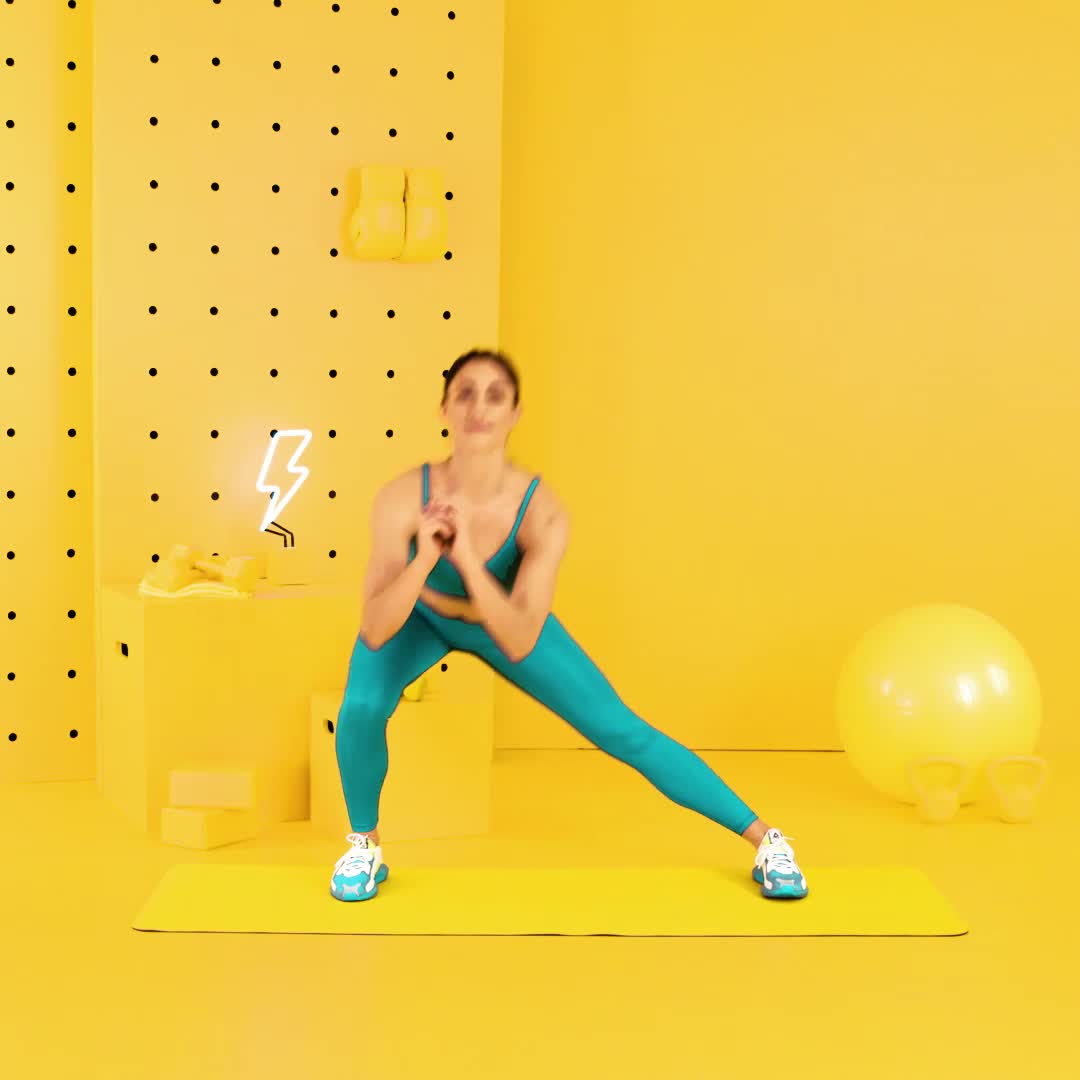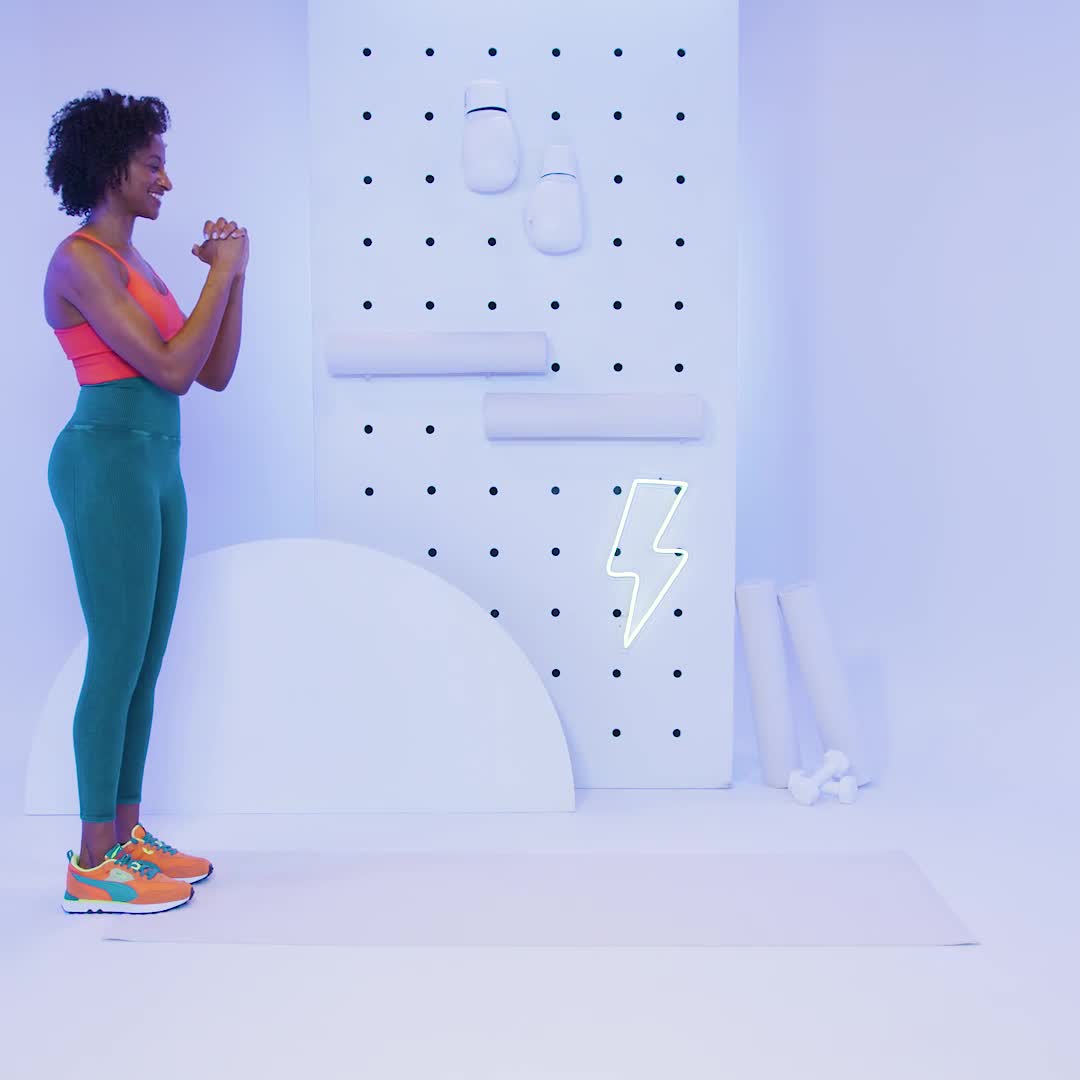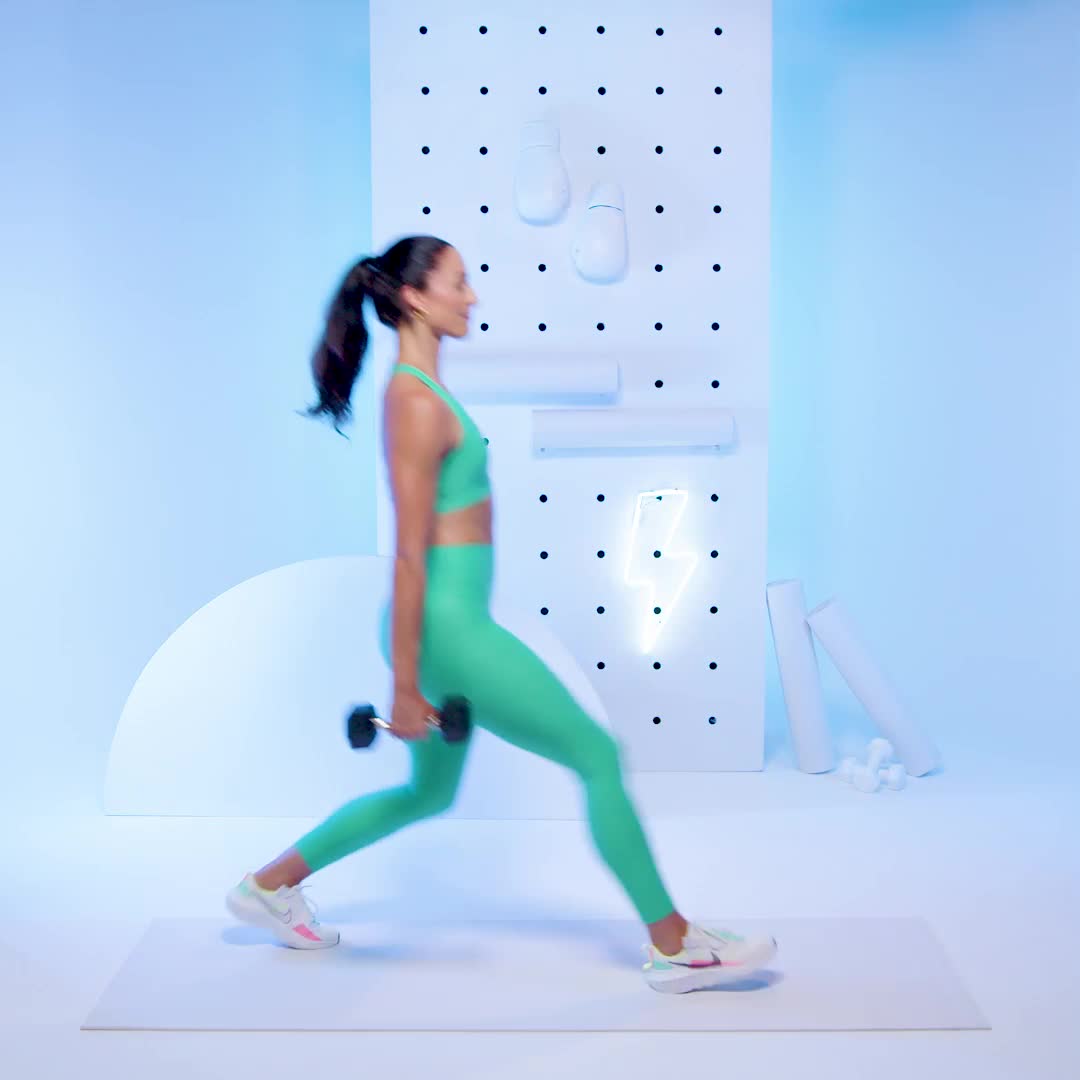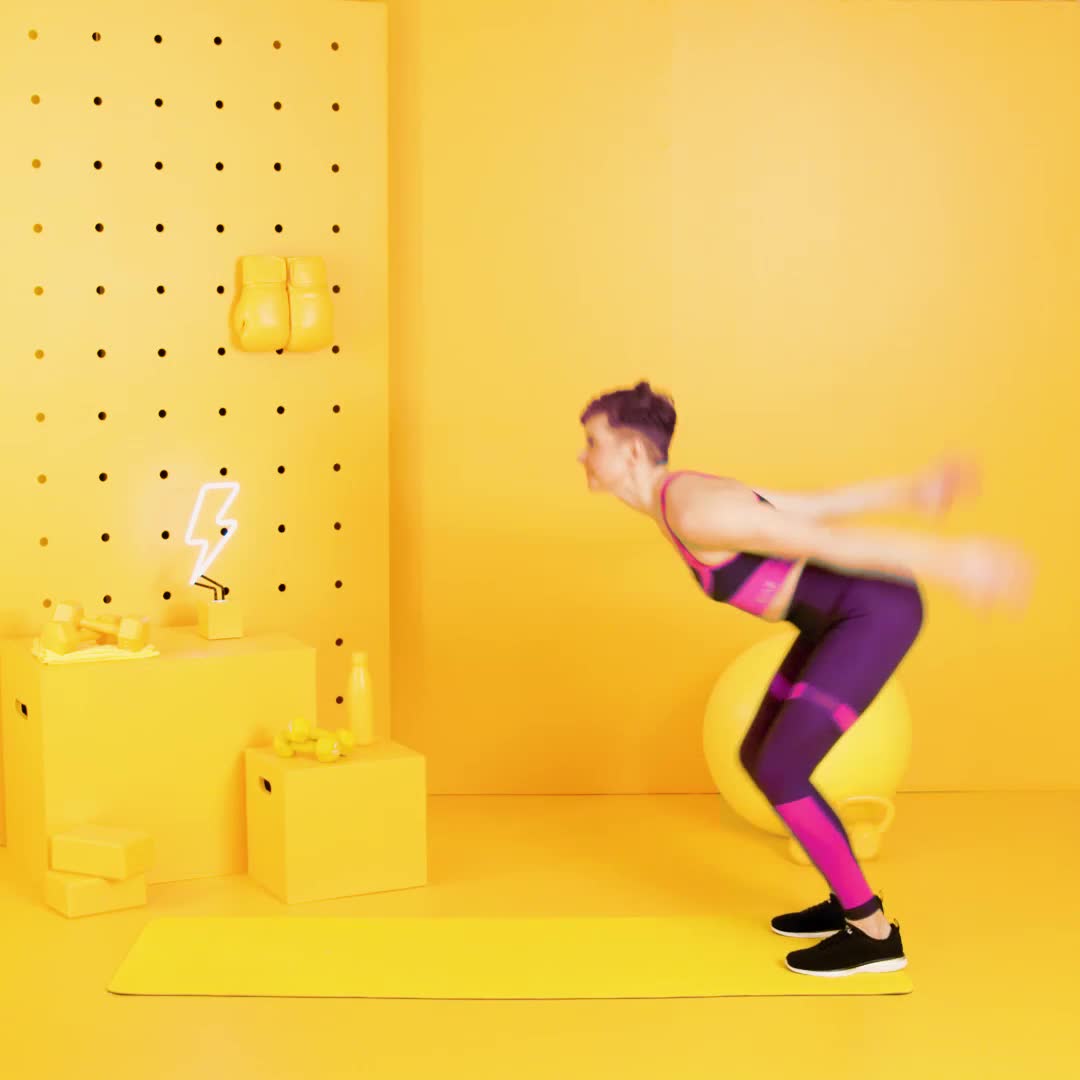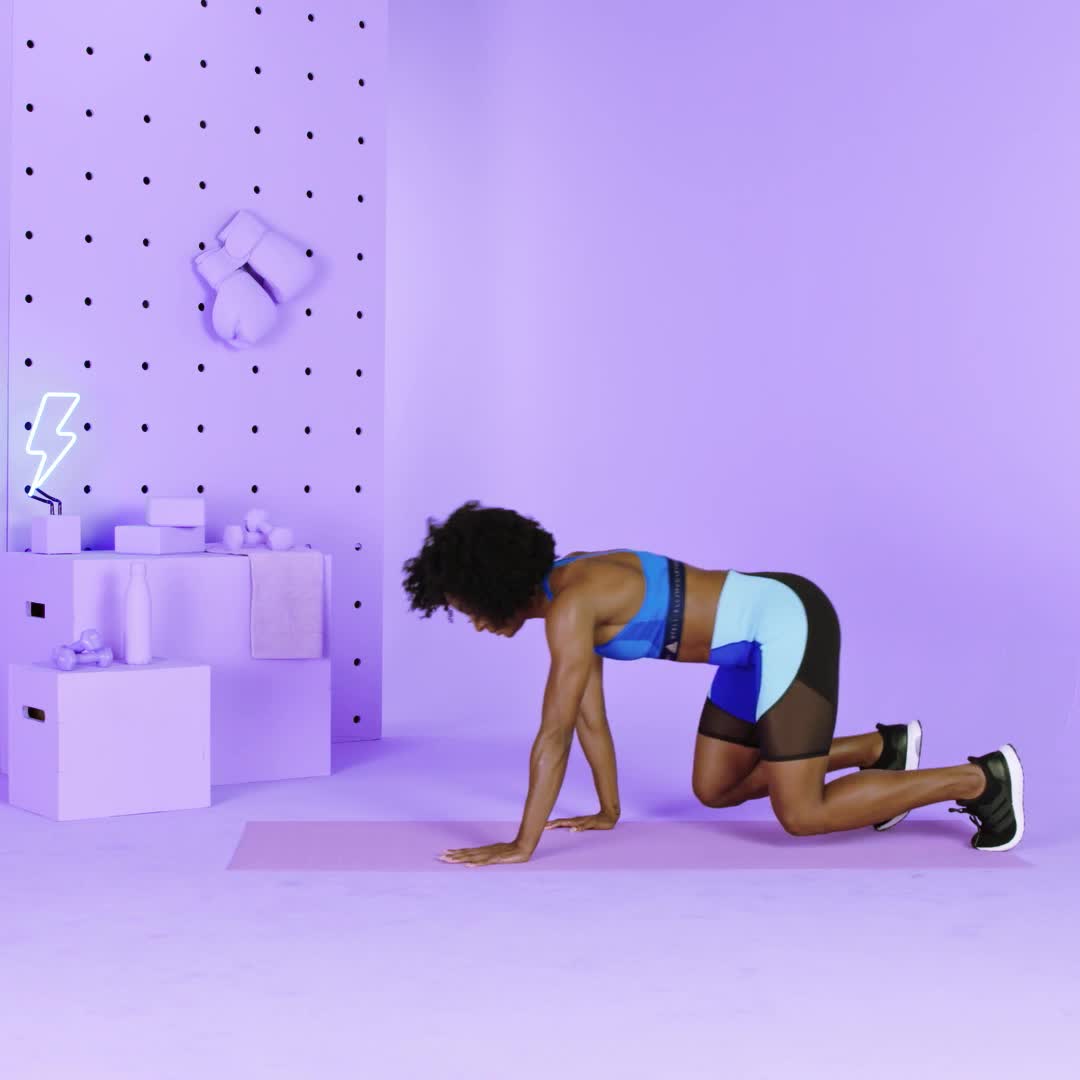Whether you realize it or not, your quads are doing the most—every time you sit, stand, step, or sprint. These powerhouse muscles on the front of your thighs are crucial for strength, balance, and injury prevention. So, it makes sense that incorporating quad exercises into your routine is one of the most effective ways to build lower-body strength and support long-term mobility.
“Each time you walk, stand up from a chair, climb stairs, jump, run, or kick, your quads are working,” says Kristina Earnest, CPT. They extend your knees and stabilize your joints, and keeping them strong helps you move well and live independently throughout your life.
Ready to fire up those legs and build a strong, balanced lower body? For a full leg workout that really hits the fronts of your thighs, try these 20 best quad exercises—perfect for any fitness level..
Bonus: Need more challenge for any or all of the squat variations? Slow your tempo (hello, time under tension), jump for power, or add resistance with dumbbells or kettlebells.
Meet the experts: Kristina Earnest, CPT, is a fitness trainer with more than a decade of experience leading cycling and strength classes and founded Kristina Earnest On Demand. Colette Nguyen, CPT, is a personal trainer and group fitness trainer at Soho Strength Lab.
Benefits Of Quad Exercises
- Builds serious leg strength. Quads are one of the largest and strongest muscle groups in the body, so training them increases your overall leg strength for exercises like squatting, lunging, leg pressing, and other exercises that require you to push with your legs, says Colette Nguyen, CPT, personal trainer.
- Supports knee health and joint stability. Your quads are the primary muscle group responsible for knee extension, says Nguyen. Strong quads help prevent injury and provide structure to the knee to better handle dynamic activities like skiing, surfing, or tennis, she says.
- Improves overall body composition. Because they’re such a major muscle group, training and growing your quads can add a significant splash in the bucket of your body’s overall lean muscle mass, says Nguyen. Plus, quads burn more energy during workouts, further aiding in fat loss and muscle gain.
- Enhances athletic performance and training variety. Whether it’s different planes of motion, isometric holds, or weighted versus bodyweight exercises, the quads can be trained in a variety of ways, says Nguyen. “You’ll never be bored or run out of options to train the quads.” Activities like running, jumping, skiing, and tennis all rely heavily on quad power, too.
How To Integrate Quad Exercises In Your Routine
How often you train quads really depends on your goals and current fitness level, but aim for one to two times per week, with a minimum of three days of rest in between for adequate recovery, says Earnest.
In terms of when to incorporate quad work, simply add it to your lower body training days. After all, your quads work as part of your larger lower body muscle system, she says.
For beginners: Start with quad exercises that feature isometric holds (such as split squat isometric holds, isometric squats, and bear planks) to develop muscular endurance, stability, and strength, says Nguyen. Once you’re ready to level-up, you can experiment with more complex moves like squat and lunge variations and/or increase the reps and sets for each exercise, she adds.
Pro tip: Pair quad exercises with flexibility training, says Nguyen. A combination of foam rolling and stretching to compliment strength training will help maintain healthy knee mobility and boost recovery, she says.
Best 20 Quad Exercises
Time: 20 minutes | Equipment: box or step, kettlebell or dumbbells, resistance band | Good for: quads, lower body
Instructions: Select four to five of the exercises below. Complete the indicated reps for each, rest for 15 seconds, then continue on to the next. Once you’ve performed all of your moves, recover for one minute. Then, repeat twice more for a total of three rounds.
1. Squat
Why it rocks: This quintessential lower-body exercise mimics all sorts of everyday movements and challenges all of your major leg muscles, including the quads.
How to:
- Stand with feet parallel and shoulder-width , arms at sides.
- Engage core and push hips back as if lowering into a chair while simultaneously reaching arms forward until clasped at chest height. Keep torso upright and spine straight, press knees outward, and distribute weight evenly between both feet.
- When thighs are parallel with the floor, press through heels to reverse the movement and return to start.
- That’s 1 rep. Complete 10 reps.
Pro tip: For an extra challenge, slow the lowering portion of your squat to a count of three.
2. Single-Leg Box Squat
Why it rocks: Not quite ready for pistol (a.k.a. full single-leg) squats? The single-leg box squat is a great place to start, and challenges your single-leg strength and balance.
How to:
- Standfacing away from a box (or chair) with weight in left foot, right foot hovering, and arms at sides.
- Engage core, bend left knee, and push hips back to sink down into a single-leg squat until butt touches box, simultaneously extending arms out straight in front of body and right foot out slightly for balance.
- Once seat taps box, press through left foot to return to standing position.
- That’s 1 rep. Complete 10 reps per side.
Pro tip: If needed, gently rest right heel on floor throughout the movement for more stability.
3. Step-Up
Why it rocks: Whether you’re hiking or hauling it up a flight of stairs, this functional exercise builds the quad strength you need to tackle all sorts of daily activities.
How to:
- Standfacing a box or other sturdy, elevated surface with hands on hips. Engage core, then step left foot up onto the box.
- Press through left foot to re-straighten left leg while driving right knee forward in front of body and up to hip height, maintaining a 90-degree bend in right knee and coming to balance on left leg on top of box.
- Return to starting position.
- That’s 1 rep. Complete 10 reps per side.
Pro tip: Keep torso as upright as possible and avoid using momentum (like swinging forward or pushing off back foot).
4. Split Squat
Why it rocks: The perfect intro to single-leg work, the split squat makes your front quad work extra hard.
How to:
- Stand tall with right foot forward and left back (as if standing on railroad tracks), hands on hips. Keep both legs straight and lift up onto ball of back foot.
- Engage core, keep torso upright, and bend both knees to lower body until back knee hovers just above floor or gently taps down.
- Press through front foot to straighten legs and return to start position.
- That’s 1 rep. Complete 10 reps per side.
Pro tip: Press front knee outward throughout the movement to keep outer glutes active and keep hips as square as possible.
5. Squat Jump
Why it rocks: This plyometric version of everyone’s favorite leg-day move requires power, upping the ante for your quads and spiking your heart rate.
How to:
- Stand with feet shoulder-width, toes facing forward, thighs parallel to floor, torso upright, and hands clasped in front of chest.
- Squat down until your thighs are at least parallel with the floor, then press through feet to jump while swinging arms straight behind body.
- Land in a squat position.
- That’s 1 rep. Complete 10 reps.
Pro tip: Land softly and keep core tight to avoid stressing lower back.
6. Bulgarian Split Squat
Why it rocks: This single-leg exercise puts a lot of emphasis on your working side and challenges your balance.
How to:
- Standtall with right foot forward and left back, top of left foot resting on a box and hands on hips, or with a dumbbell in each hand for an added challenge.
- Shift weight into right foot, engage core, keep torso upright, and bend both knees to lower body until back knee hovers just above floor or gently taps down.
- Press through right foot to straighten legs and return to start position.
- That’s 1 rep. Complete 10 reps per side.
Pro tip: Press front knee outward throughout the movement and keep hips as square as possible.
7. Split Squat Isometric Hold
Why it rocks: Isometric moves put the working muscles under constant tension, which is key for boosting muscular endurance.
How to:
- Kneel with right toe tucked under, 90-degree bends in both knees.
- Lift right knee one to two inches off floor. Maintain upright posture and engage core.
- Hold 30 seconds per side, then proceed to next move.
8. Goblet Squat
Why it rocks: This must-do move makes loading your squats with weight comfortable (and shows your back and abs some love, too).
How to:
- Hold a kettlebell (or head of a dumbbell) chest-height with elbows bent and close to ribs. Stand with feet shoulder-width, toes slightly turned out.
- Engage core and push hips back as if lowering into a chair. Keep chest upright and spine straight; push knees outward and distribute weight evenly through feet.
- When thighs are parallel with floor, press through feet to reverse the movement and return to start position.
- That’s 1 rep. Complete 10 reps.
Pro tip: Keep weight in heels throughout entire movement.
9. Reverse Lunge
Why it rocks: This beginner-friendly lunge builds single-leg strength for a balanced lower body.
How to:
- Stand with feet shoulder-width and arms at sides, holding dumbbells at sides. (Modification: Ditch the weights to make it bodyweight only.)
- Engage core and take a big step back with right foot.
- Keeping front knee in-line with front foot, bend both legs until back knee taps floor directly beneath hip. (If modifying with bodyweight, simultaneously bend arms and bring hands together at chest height.)
- Push through feet to reverse the movement and return to start.
- That’s 1 rep. Complete 10 reps per side.
Pro tip: Keep core tight to avoid putting stress on lower back.
10. Curtsy Lunge
Why it rocks: In addition to your quads, this lunge variation hits your inner thighs and outer glute muscles more than most.
How to:
- Stand with feet shoulder-width. Take a big step back with left leg, crossing it behind right side.
- Bend knees and lower hips until right thigh is nearly parallel to the floor. Keep torso upright, hips and shoulders as square as possible.
- Return to standing. That’s 1 rep. Complete 10 reps per side.
Pro tip: Press right knee outward throughout movement to engage side-butt (a.k.a. glute medius) muscle. No band? No problem. Just clasp hands in front of chest.
11. Squat Walks
Why it rocks: To keep your chest upright and spine long as you change levels, you have to really engage your core, making this a double-whammy abs blaster too.
How to:
- Stand with feet shoulder-width, and cross hands overchest.
- Slowly sit hips back and down into a half squat position.
- Keeping hips stable, lower right knee down to floor, followed by left.
- Bring right foot forward, followed by left, and return to half-squat position. That’s 1 rep. Complete 10 reps.
Pro tip: Keep the movement slow and controlled, avoiding the temptation to use momentum to stand up from the knees.
12. Pistol Squat
Why it rocks: In addition to working single-leg strength, this exercise also challenges your dynamic balance.
How to:
- Stand with feet shoulder-distance. Lift right leg while sitting hips back and bending left knee, bringing body as low as possible while keeping torso upright. Arms can be held in front of chest or out to sides for balance.
- Driving through left heel, stand up to return to start.
- That’s 1 rep. Complete five to 10 reps per side.
Pro tip: Practice using TRX straps for support until you are strong enough to do this advanced bodyweight move.
13. Isometric Squat
Why it rocks: Seemingly simple isometrics are a great way to really burn out your legs at the end of a workout.
How to:
- Stand with feet shoulder-width, arms at sides. Engage core push hips back, and bring arms forward to clasp at chest height as you lower down slowly.
2. Pause when thighs are parallel with the floor. Hold for 30 seconds. That’s 1 rep. Complete 10 reps.
Pro tip: Up for an extra challenge? Hold a weight in goblet position.
14. Back Squat
Why it rocks: The sky is the limit with leveling up this variation. This setup allows you to grab your heaviest dumbbell or load up the barbell and see what your quads are capable of.
How to:
- Stand with feet shoulder-width, holding a dumbbell in both hands and resting behind neck.
- Engage core, push hips back, and lower slowly until thighs are parallel with floor.
- Press through feet to reverse the movement and return to start. That’s 1 rep. Complete 10 reps.
Pro tip: If you’re trying the barbell variation, start with just the bar itself to get comfortable with the movement pattern.
15. Lateral Lunge
Why it rocks: This lunge variation challenges your leg strength and mobility in a lateral plane of motion. In addition to the glutes and hamstrings, this move also stimulates the inner and outer heads of the quad for improved lateral stability at the knee.
How to:
- Stand with feet shoulder-width.
- Take a big step to the side with right leg, then bend right knee and push hips back and lower until right knee is bent 90-degrees. The left leg should be extended and torso slightly leaning forward.
- Drive through the right heel to return back to start. Repeat on the left side. That’s 1 rep. Complete 10 reps per side.
Pro tip: The most common mistake is stepping out too far, so Nguyen recommends starting with smaller steps and gradually widening to a width that feels the most comfortable.
16. Speed Skaters
Why it rocks: This plyometric exercise features jumping and quick change of direction in the lateral plane which pays off for lower body strength and overall sport performance.
How to:
- Stand with feet shoulder-width.
- Jump to the right and, as you land, cross your left leg behind you, landing on your right leg with a bent knee, left toes gently touching floor.
- Quickly hop to the left and repeat on the other side. Continue alternating for 30 seconds, then proceed to the next move.
Pro tip: Start with a relaxed but consistent pace and gradually increase the speed as tolerated, says Nguyen.
17. Walking Lunge
Why it rocks: Walking lunges challenge your quad endurance and power as you travel forward while also improving range of motion, balance, and posture by loosening up your hips and hamstrings.
How to:
- Stand with hands clasped in front of chest and feet shoulder-width. (Modification: Amp up effort by holding dumbbells.)
- Take one large step forward with right leg, keeping torso upright.
- Bend knees and lower body into lunge position, stopping when both knees form 90-degree angles.
- Press through right foot and step forward again so you land in the same position with left side, as if “walking.” That’s 1 rep. Complete 10 reps per side.
Pro tip: Keep your pace smooth and consistent and focus on soft landings, says Nguyen.
18. Forward Lunge
Why it rocks: This lunging variation is the upgrade of the popular reverse lunge since it requires a different kind of force production to change directions and targets your quads, calves, hamstrings, and glutes.
How to:
- Stand with feet shoulder-width and hands by sides, holding dumbbells.
- Take a big step forward with right foot and bend at knee until both knees form 90-degree angles while bringing hands to clasp in front of body.
- Press down into right heel to push back to starting position. That’s 1 rep. Complete 10 reps per side.
Pro tip: Keep a firm and solid core to maintain stability, says Nguyen.
19. Broad Jump
Why it rocks: Not only does this intermediate plyometric exercise strengthen your quads and glutes, but it also hones your ability to perform burst-like movements and prepare for a higher impact landings.
How to:
- Stand with feet shoulder-width.
- Hinge at hips, then launch body forward in a controlled jump movement.
- Land on feet as far as you (comfortably) can from initial starting point. That’s 1 rep. Complete 10 reps.
Pro tip: Maintain a soft bend through your knees to land and start with smaller, more controlled jumps, says Nguyen. As you get stronger and more comfortable in the movement pattern, gradually push the amount of distance traveled in each jump.
20. Bear Crawl
Why it rocks: This bodyweight floor exercise hits your quads, core, and shoulders. Speed it up and you’ll get some cardio perks, too.
How to:
- Start in bear plank, with shoulders over wrists and hips over knees, hovering a few inches off floor.
- Keeping hips stable, head in-line with tailbone, and knees lifted off floor, slowly step opposite hand and foot forward, repeating with other hand and foot for four steps total.
- Then, reverse movement to step backward and return to start. That’s 1 rep. Complete 10 reps.
Pro tip: Struggling to remember which hand and foot are supposed to move together? Imagine you’re climbing up a ladder, says Nguyen.
Anatomy Of The Quads
As the name suggests, the quadriceps consist of four muscles, says Nguyen. All four heads are located on the front of the thighs and insert into the patella via the quadriceps tendon, where they’re responsible for knee extension.
- Rectus Femoris: The middle head closest to the skin—also assists with hip flexion since it crosses the hip joint.
- Vastus Lateralis: The outermost head—the largest of the four, and a major contributor to knee extension.
- Vastus Medialis: The inner head—helps stabilize the kneecap, especially during deep squats or lunges.
- Vastus Intermedius: Sits beneath the rectus femoris—deeply embedded but key to pure extension strength.
What is the best exercise for quads?
“The back squat is without a doubt the most effective exercise you can do for building quad strength, power, and size,” says Earnest. It targets all four heads of the quads and allows for progressive overload with weights, which is essential for building strength and size. Plus, you’ll feel powerful AF doing it.
Can you strengthen quads without squats?
Yes, absolutely. Walking lunges, step-ups, and split squats all target your quads and don’t require a squat rack,” says Earnest. As a bonus, they challenge your stability and balance in new ways.
Don’t forget your cardio: activities like running, biking, stair climbing, and kickboxing all engage your quads—especially when you increase resistance or intensity.
What causes weak quads?
Sitting too much, plain and simple. Desk jobs, driving, and even lounging on the couch can reduce muscle activation in the legs. Weak quads often show up as chronic knee pain or trouble with daily movements, says Earnest. That’s your sign to show your quads some strength training love.
How do you make your quads stronger?
Train smart and consistently. One to two focused lower-body sessions per week—with bodyweight and weighted moves—will make a huge difference, says Earnest. “This gives our muscles time to recover and reboot before our next session so we can get the most out of our workout.”
Andi Breitowich is a Chicago-based writer and graduate student at Northwestern Medill. She’s a mass consumer of social media and cares about women’s rights, holistic wellness, and non-stigmatizing reproductive care. As a former collegiate pole vaulter, she has a love for all things fitness and is currently obsessed with Peloton Tread workouts and hot yoga.
Talene Appleton is the fitness editor at Women’s Health, where she nerds out over all things fitness, nutrition, and wellness. She was previously the fitness and commerce editor at Men’s Health, where she tested and reported on the newest, buzziest fitness and wellness products to hit the market. As a NASM-certified personal trainer and Precision Nutrition-certified nutrition coach, she is passionate about supporting women at the intersections of fitness, food, and community. Talene was on the George Washington University college dance team (shout out First Ladies) before moving on to become an NBA dancer for the Washington Wizards—you can still catch her at dance classes across New York and LA in her free time. Before entering journalism full-time, Talene was a private chef for four years and still enjoys cooking for and hosting friends and family regularly.
Read the full article here


